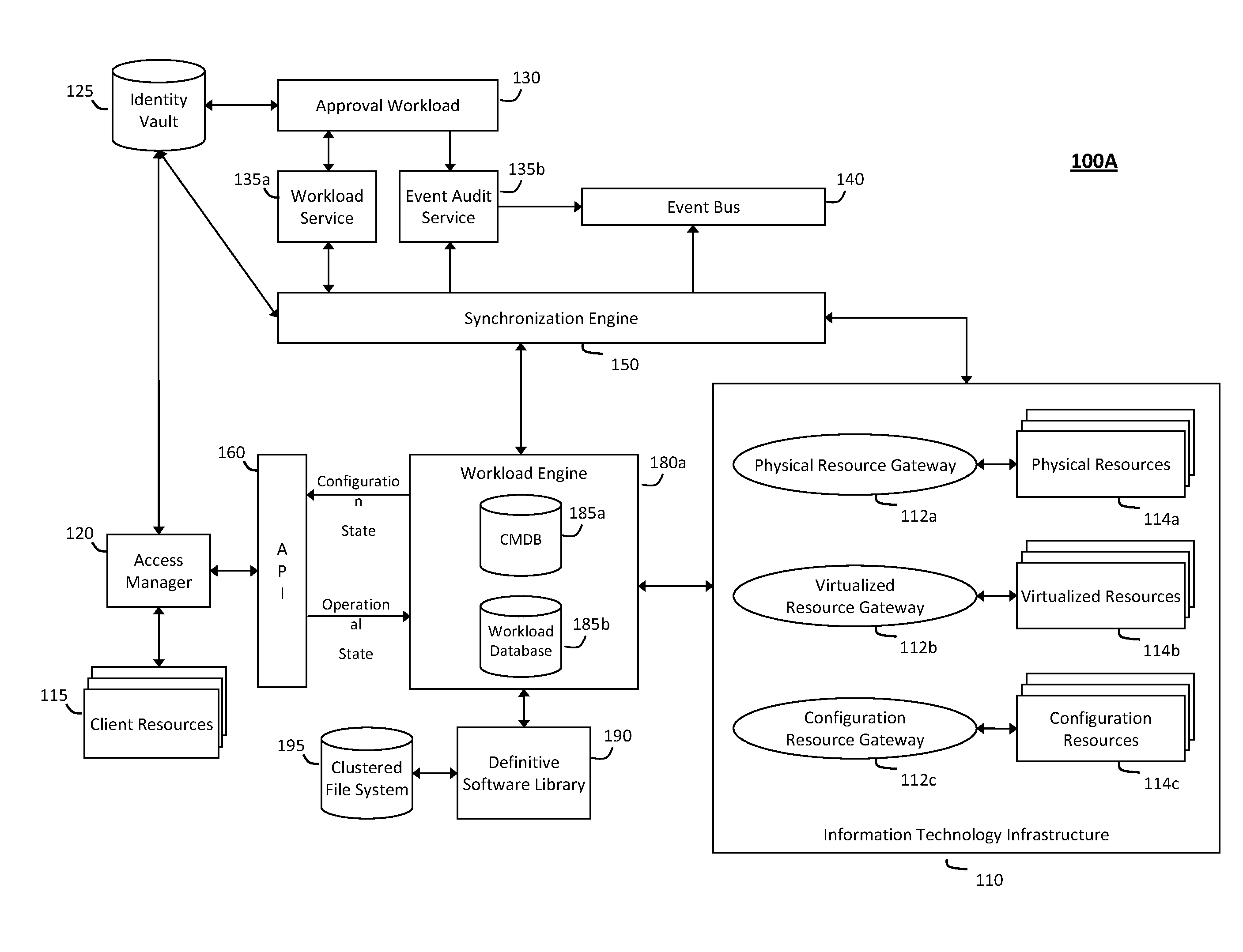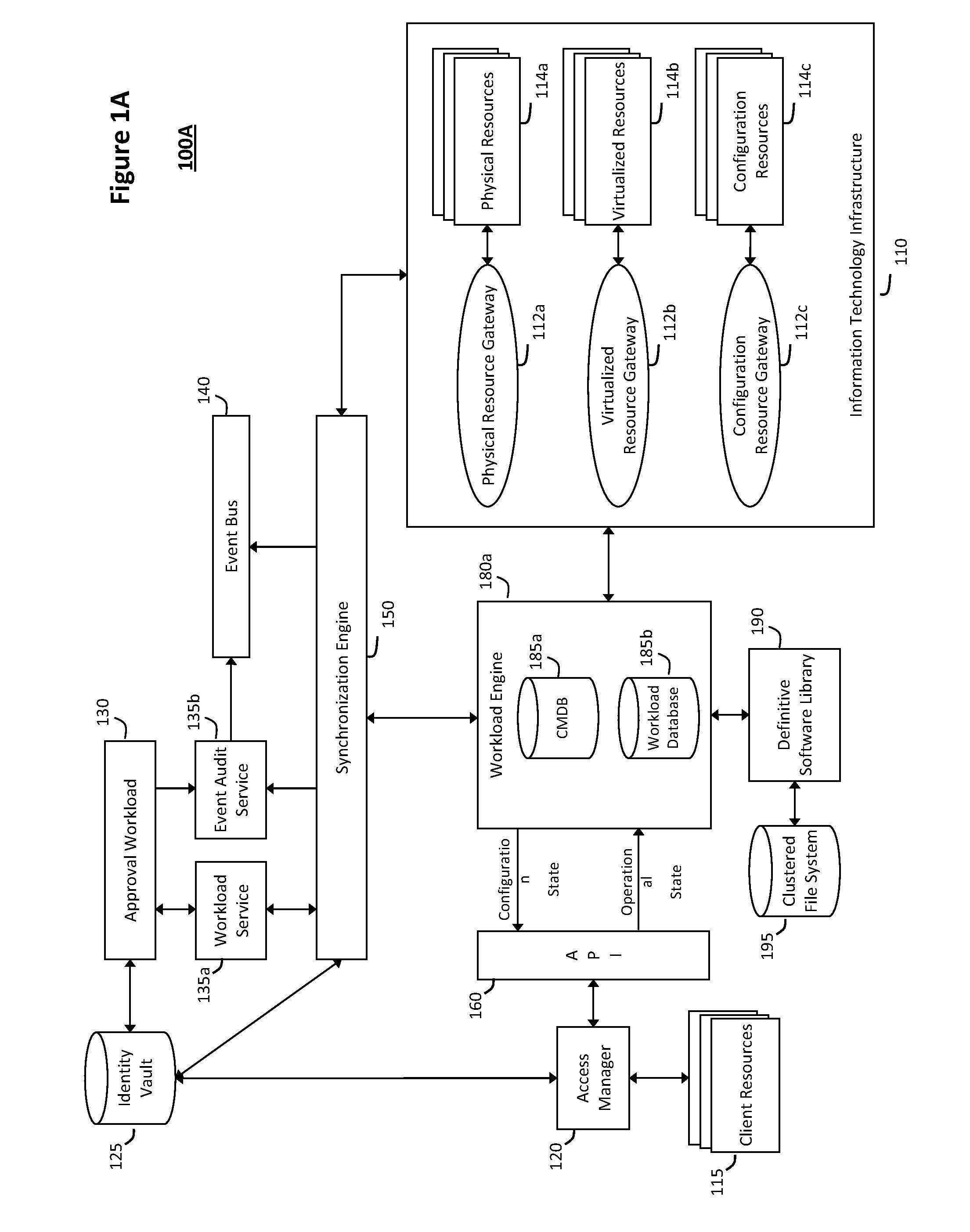System and method for intelligent workload management
a workload management and workload technology, applied in the field of system and method for intelligent workload management, to achieve the effect of free computational resources
- Summary
- Abstract
- Description
- Claims
- Application Information
AI Technical Summary
Benefits of technology
Problems solved by technology
Method used
Image
Examples
Embodiment Construction
[0024]According to one aspect of the invention, FIG. 1A illustrates an exemplary model-driven architecture 100A in a system for intelligent workload management, while FIG. 1B illustrates an exemplary service-oriented architecture 100B in the system for intelligent workload management. In one implementation, the model-driven architecture 100A shown in FIG. 1A and the service-oriented architecture 100B shown in FIG. 1B may include various components that operate in a substantially similar manner to provide the functionality that will be described in further detail herein. Thus, any description provided herein for components having identical reference numerals in FIGS. 1A and 1B will be understood as corresponding to such components in both FIGS. 1A and 1B, whether or not explicitly described.
[0025]In one implementation, the model-driven architecture 100A illustrated in FIG. 1A and the service-oriented architecture 100B illustrated in FIG. 1B may provide an agile, responsive, reliable,...
PUM
 Login to View More
Login to View More Abstract
Description
Claims
Application Information
 Login to View More
Login to View More - R&D
- Intellectual Property
- Life Sciences
- Materials
- Tech Scout
- Unparalleled Data Quality
- Higher Quality Content
- 60% Fewer Hallucinations
Browse by: Latest US Patents, China's latest patents, Technical Efficacy Thesaurus, Application Domain, Technology Topic, Popular Technical Reports.
© 2025 PatSnap. All rights reserved.Legal|Privacy policy|Modern Slavery Act Transparency Statement|Sitemap|About US| Contact US: help@patsnap.com



